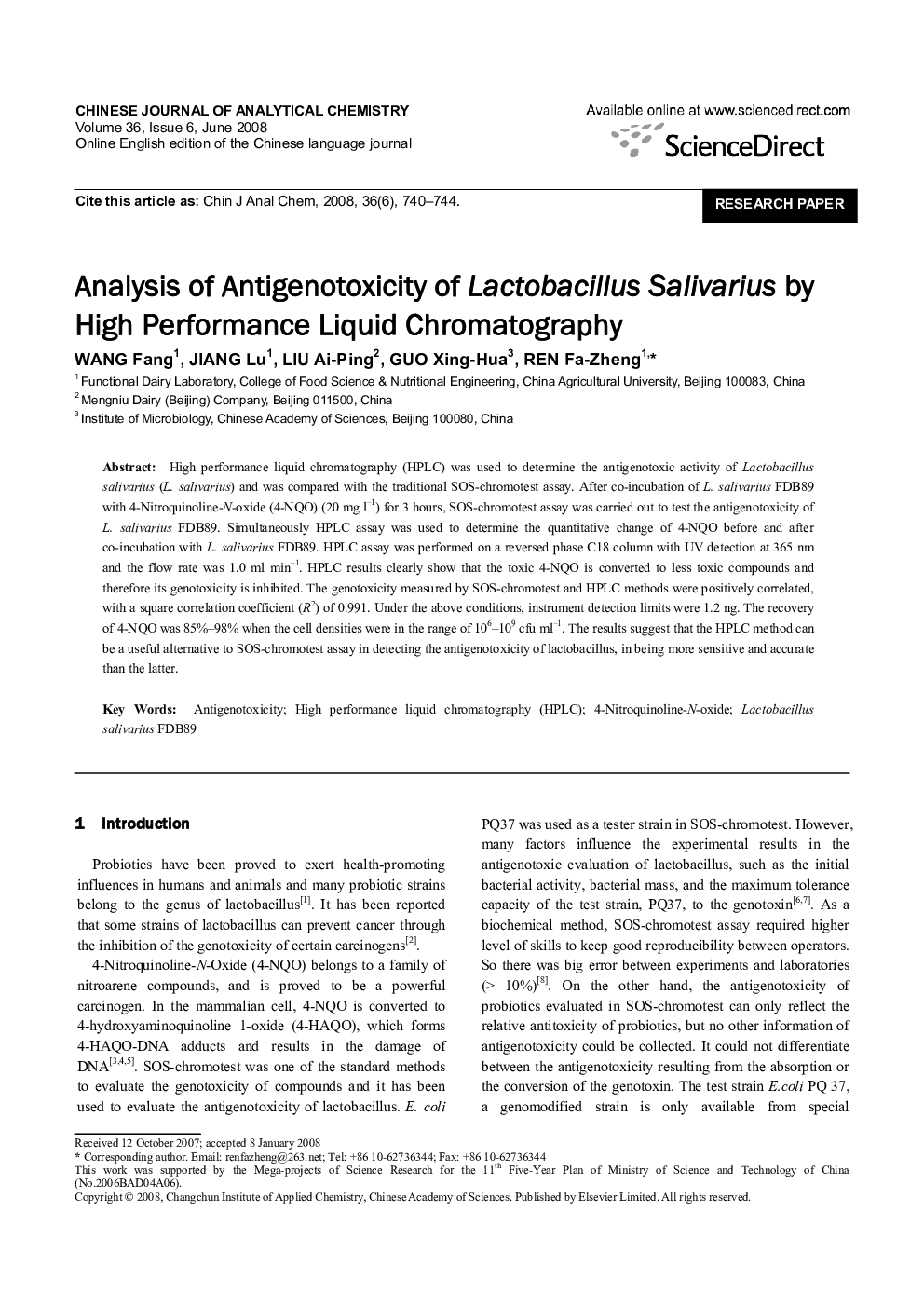| Article ID | Journal | Published Year | Pages | File Type |
|---|---|---|---|---|
| 1183195 | Chinese Journal of Analytical Chemistry | 2008 | 5 Pages |
High performance liquid chromatography (HPLC) was used to determine the antigenotoxic activity of Lactobacillus salivarius (L. salivarius) and was compared with the traditional SOS-chromotest assay. After co-incubation of L. salivarius FDB89 with 4-Nitroquinoline-N-oxide (4-NQO) (20 mg l−1) for 3 hours, SOS-chromotest assay was carried out to test the antigenotoxicity of L. salivarius FDB89. Simultaneously HPLC assay was used to determine the quantitative change of 4-NQO before and after co-incubation with L. salivarius FDB89. HPLC assay was performed on a reversed phase C18 column with UV detection at 365 nm and the flow rate was 1.0 ml min−1. HPLC results clearly show that the toxic 4-NQO is converted to less toxic compounds and therefore its genotoxicity is inhibited. The genotoxicity measured by SOS-chromotest and HPLC methods were positively correlated, with a square correlation coefficient (R2) of 0.991. Under the above conditions, instrument detection limits were 1.2 ng. The recovery of 4-NQO was 85%–98% when the cell densities were in the range of 106–109 cfu ml−1. The results suggest that the HPLC method can be a useful alternative to SOS-chromotest assay in detecting the antigenotoxicity of lactobacillus, in being more sensitive and accurate than the latter.
